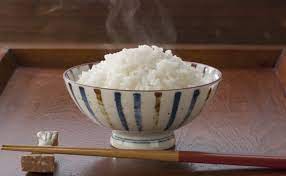

How do Chinese and Japanese people stay lean if they eat a lot of rice and noodles?
How do Chinese and Japanese people stay lean if they eat a lot of rice and noodles? Despite consuming rice and noodles, many Chinese and Japanese people stay lean due to several cultural, dietary, and lifestyle factors:
Portion Sizes
Smaller portions: In general, the portions of rice and noodles in traditional Asian diets are much smaller compared to Western diets. These grains are often eaten in balance with other nutrient-dense, low-calorie foods like vegetables, lean proteins (e.g., fish, tofu), and seaweed.
Balanced Meals
Variety in the diet: Meals in China and Japan tend to include a wide variety of foods. Vegetables, seafood, and fermented products (like miso and pickled vegetables) are staples, providing essential nutrients and promoting gut health, which is linked to weight management.
Less processed foods: Traditional diets have less sugar, highly processed snacks, and high-fat, calorie-dense foods that are common in Western diets.
Lower Fat Intake
Cooking methods: Stir-frying, steaming, and boiling are common cooking techniques that use minimal oil. This helps limit fat intake compared to frying or adding butter to foods.
Low dairy and meat consumption: Historically, both China and Japan have low consumption of dairy and fatty meats, which tend to be calorie-dense.
Frequent Physical Activity
Walking and active lifestyles: Both cultures incorporate a lot of walking and physical activity in their daily lives. In cities, it’s common for people to walk or bike instead of using cars for short distances.
Cultural practices: Practices like Tai Chi (in China) and daily exercises like stretching or light walking contribute to a more active lifestyle.
Mindful Eating Habits
Eating until 80% full: The Japanese concept of “hara hachi bu” encourages eating until you’re 80% full, promoting mindful eating and helping to prevent overeating.
Smaller, slower meals: Meals are often spread over many small dishes, promoting slower, more mindful consumption, which can prevent overeating.
Green Tea and Fermented Foods
Green tea: Consumed regularly in both cultures, green tea contains compounds that may aid metabolism and fat burning.
Fermented foods: Foods like miso, kimchi, and natto promote gut health, which can impact how food is digested and fat is metabolized.
Low Sugar Consumption
Traditional diets in both countries are lower in refined sugar compared to Western diets. Desserts are often less sweet and are eaten in moderation.
Cultural Attitudes Towards Body Weight
In both countries, slimness is often culturally valued, and there is greater social awareness around staying fit, which can influence lifestyle choices related to diet and exercise.
Though the diet includes carbohydrates like rice and noodles, the overall balance and moderation in other food groups, along with active lifestyles and mindful habits, play a big role in maintaining lean body types.





